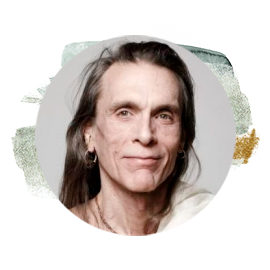Siddhi is a Sanskrit noun often translated as “power” but more exactly means “accomplishment,” “attainment “or “success.” A siddha is one who has accomplishment or success. The third pada (chapter) of the Yoga Sutra is titled Vibhuti, and addresses the acquisition of siddhi. Imagine a conversation between two Siddha Masters, Patanjali and Nikola Tesla…
Patanjali: By performing samyama on the form of the body in order to suspend its reflective and receptive power, the contact between the eye of the observer and the light from the body is broken, and the body becomes invisible. 1
Tesla: Matter is created from the original and eternal energy that we know as light. It shone, and then appeared stars, the planets, man, and everything on Earth and in the Universe. Matter is an expression of infinite forms of light, because energy is older than it. There are four laws of creation. The first is that (it is) the source of all the baffling, dark plot that the mind cannot conceive, or mathematics measure. In that plot fit the whole Universe. The second law is spreading a darkness, which is the true nature of light, from the inexplicable and it’s transform (ation) into the Light. The third law is the necessity of the light to become a matter of light. The fourth law is: no beginning and no end; three previous laws always take place and the Creation is eternal.3
Patanjali: This principle also explains the power of appearance and disappearance of sound and the other sensations of taste, touch, and smell by samyama on the tanmatras, which are mostly psychic in nature. 2
Tesla: I am part of a light, and it is the music. The light fills my six senses: I see it, hear, feel, smell, touch and think. Thinking of it means my sixth sense. Particles of light are written note. A bolt of lightening can be an entire sonata. A thousand balls of lightening is a concert. 3
Patanjali: These powers are uplifting and encouraging when the mind is turned outward, but they are obstacles to samādhi.4
Tesla: Knowledge comes from space; our vision is its most perfect set. We have two eyes: the earthly and spiritual. It is recommended that it become one eye. 3
Nikola Tesla, a visionary, and accomplished being of the modern era, said that he had family conversations with lightning and the colors of a sunset taught him invention. We know less about the historic Patanjali, but it is said that in his continuous pursuit of the light of knowledge he became a grammarian, an ayurvedic doctor, and a philosopher. Both of these people urge us to find perfection and capture our universal identity.
So also does Kapila, the founder of Samkhya Philosophy, in this excerpt from the Srimad Bhagavatam where he instructs his mother, Devahūti: “Egoism in the mode of passion produces two kinds of senses—the senses for acquiring knowledge and the senses of action The senses of action depend on the vital energy (prāna), and the senses for acquiring knowledge depend on intelligence (buddhi).5 By interactions of the air and the sensations of touching, one receives different forms according to destiny. By evolution of such forms, there is fire and the eye sees different forms in color.6 My dear mother, the characteristics of form are understood by dimension, quality and individuality. The form of fire is appreciated by its effulgence.”7
The Sun is the original source of light that makes vision possible. The fire/light of the yogi is the tapas that burns away impurities, and the ash that remains is the vibhuti; the sacred ash. Siddhi is the power that rises out of the black ashes like a phoenix from the fire of tapas. Patanjali reminds us that it is dangerous to be self-satisfied and halt progress with the acquisition of siddhis—restings on our laurels.
In ancient Greece, the laurel wreath (Laurus nobilis) was a symbol of victory and status. Apollo is depicted with a laurel wreath on his head and is said to have declared the sacred nature of the laurel or bay tree after the nymph Daphne, who he was pursuing, would turn into the tree to avoid being captured. A laureate is one who is crowned with laurel leaves signifying their accomplishment. “Resting on one’s laurels” has come to mean becoming lazy and self-satisfied with temporal success.
We could never accuse either Patanjali or Tesla with resting on their laurels. In fact, most outstanding historic personalities worked feverishly to complete each day with the full potential of that present moment joined to the momentum of previous moments and moving into a future potential. This is Yoga as the perfection of action.

